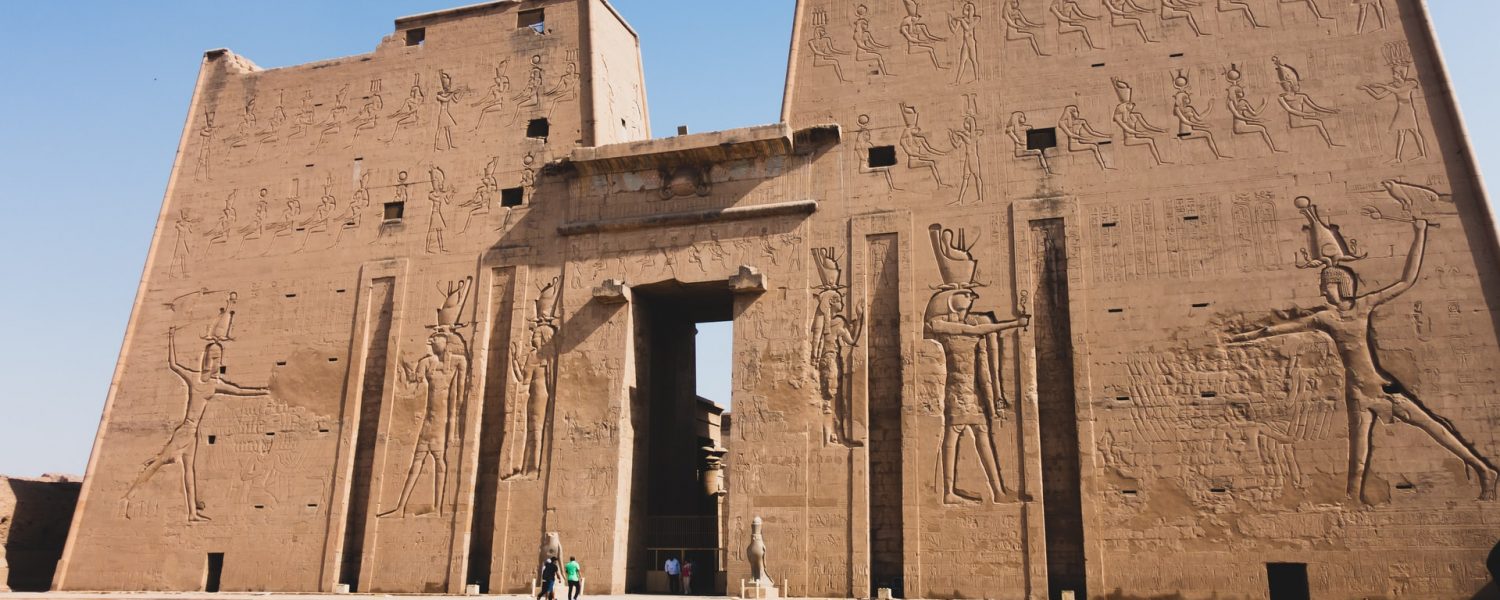Temple of Edfu
The Temple of Edfu or the Temple of Horus in Edfu is the second largest temple in ancient Egypt, after Karnak . Edfu Temple is about 110 kilometers from Luxor.
And it represents one of the last attempts of the Ptolemies to build temples in the style of their ancestors in grandeur and grandeur. It took about 180 years to build the Temple of Horus. The engraved symbols and letters mention the rituals that were followed in the past, and that the temple building was built where a great battle took place between “Horus” and “Sitt.”
The “Edfu Temple” is an Egyptian temple located on the west bank of the Nile in Edfu, Upper Egypt. The city was known in the Hellenistic and Latin period as “Apollonopolis Magna”, after the chief god Horus, who was identified as Apollo under [[interpretation] Graeca.
It is one of the best-preserved shrines in Egypt. The temple was built in the Ptolemaic kingdom between 237 and 57 BC. The inscriptions on its walls provide important information about the language, mythology and religion during the Hellenistic period in Egypt. In particular, the excavated temple building texts “provide details of each of its construction, and also preserve information about the mythical interpretation of this and all other temples as the creation island.”
History of the construction of Edfu temple
The inscriptions on the Temple of Edfu indicate that it was dedicated to the god Gore Hadti, which is a sacred falcon that is usually represented in the image of a human with a falcon head. The day of the election and coronation of this god is one of the greatest annual feasts in ancient Egypt.
Stages of building the temple of Edfu
The stages of building this temple included three basic stages, and they are as follows:
1- The first stage: which includes the original building, and it is the nucleus of the temple from the original, as it is a complete temple in itself. The temple in 237 BC.
After a period of about 25 years, the main construction was completed, and the last stone was laid in its construction on August 14 of the year 212 BC, i.e. in the tenth year of the reign of Ptolemy IV, and when tranquility returned to the country during this period Temporal work continued in the temple, and in the fifth year of the reign of Ptolemy VII, the doors of the temple, and several other supplies were installed in their place.
2- The second stage: It includes the process of decorating the walls and drawing inscriptions with gold plates. It took place approximately two years later from this date, i.e. on July 2, 140 BC. This means that the temple took approximately 97 years to build. General, including periods of suspension of work, which were mainly caused by revolutions, and other things.
3- The third stage: It includes the construction of the pillared hall, the front hall, in addition to the gates. It had not been built, as the pillared hall was built on September 5, 122 BC, i.e. specifically in the 46th year of the reign of Ptolemy IX.
As for the front atrium, it was built several years after this date, while the process of erecting the gates, and then installing the large entrance doors on December 5, 57 BC, meaning that the entire temple took about one hundred and eighty years to build. We have added working periods.
The importance of the city of Edfu: The city of Edfu was originally one of the important and rich Egyptian cities since the ancient state, and the importance of this city is due to being the house of the god Hor in the south in addition to being the capital of the second region of Upper Egypt, and is the city in our time It is one of the most important tourist attractions.
Which is visited by large numbers of tourists when they visit Egypt, and the first credit for discovering this temple is attributed to Auguste Mariette, and that was in the year 1860 AD.
Temple contents
The temple contains many architectural elements, which are:
1- The edifice of the temple: – In front of which stands two huge falcons made of granite, which symbolize Horus, the god of the temple.
Read More




